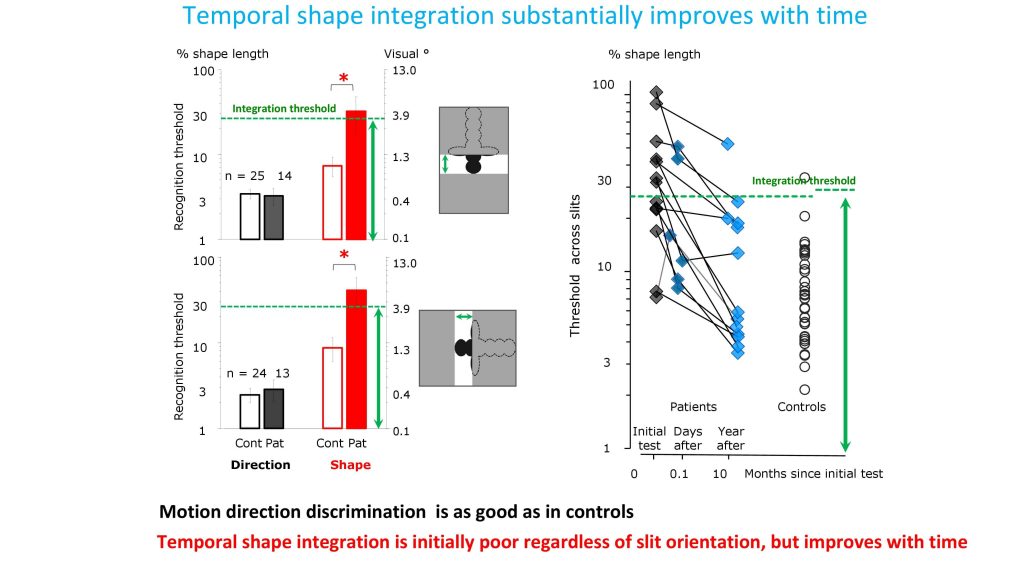A fundamental problem that faces the visual system arises from the fact that the image that falls on the retina is 2-dimensional, while the world is 3-dimensional. Visual perception is based on a massive amount of inference because the 3D scene structure is not directly available from the retinal image. It is particularly challenging to deduce the shape of an object that moves behind a narrow slit such that only a tiny fraction of it is visible at any instant. Impressively, human observers correctly recognize objects in slit-viewing conditions by early childhood. They do so by integrating the information provided by the contours available in each sliver of the image, over the whole time of the viewing episode. But vision develops through ‘critical periods’ at specific times after birth, and it is not known whether the capability to temporally integrate contour information can be acquired if one has been effectively blind throughout childhood. This information is important for refining approaches for the restoration of vision following prolonged early-onset blindness. To study this question, we studied 23 Ethiopian children which had bilateral early-onset cataracts, resulting in extremely poor vision in infancy. These children were identified and underwent surgical cataract removal by our group. We then followed the recovery of their ability to use their visual information. The patients’ visual acuity typically improved substantially within 6 months post-surgery. Still, at this stage most were unable to recover shape under slit-viewing conditions, although they could infer the direction of motion of the object. Remarkably, the same patients could identify shapes in slit-conditions necessitating temporal integration if trained a few times, even when training sessions were months apart. In some patients, this acquired capability transferred to novel stimuli in similar slit-viewing conditions. Thus, learning was not limited to the specific visual features of the shapes used in training. These results indicate that sophisticated visual inference routines remain trainable (‘plastic’) well into adolescence. In consequence, vision restoration after prolonged early-onset blindness is feasible to a greater extent than previously thought.




